Some things are irreplaceable. Sentimental stuff, sure, but we’re talking more about things like famous works of art and historic artifacts that shed light on the goings-on of pivotal people that lived and died centuries ago.
One such haul of artifacts, stolen from the Dutch National Archives ten years ago, recently resurfaced in an Amsterdam attic. The person who discovered them emailed a famous art detective, who was thrilled when he got a closer look at the treasure trove.
RELATED:A famous art detective couldn’t believe his eyes when he recently got a chance email from a stranger
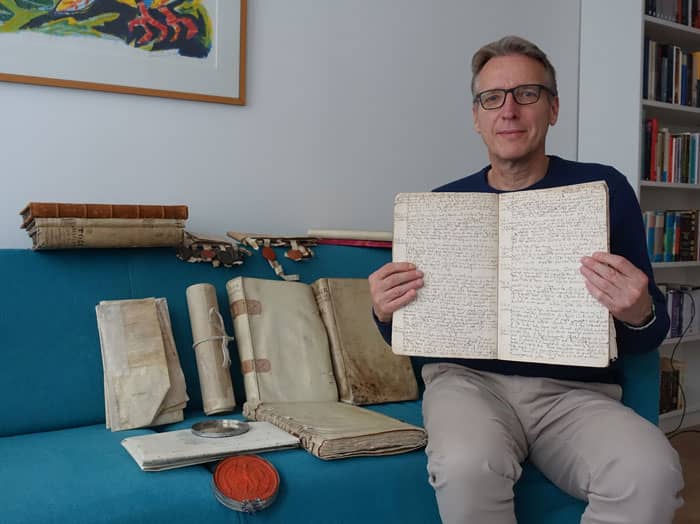
The stranger had unearthed a strange box of old documents while clearing out a relative’s attic
About 10 years back, an employee pilfered 25 irreplaceable historic documents from the Netherland’s National Archives, located in the Hague. The haul included 16th-century records of covert government activities, documents from the Dutch East India Company, and a 15th-century letter from an actual knight.
Officials had no clue the historic documents had been stolen until recently, when they were returned by the Amsterdam police and famous art detective Arthur Brand, widely recognized for recovering lost and stolen works of art, priceless artifacts, and, in 2015, even pieces of Adolf Hitler’s art collection.
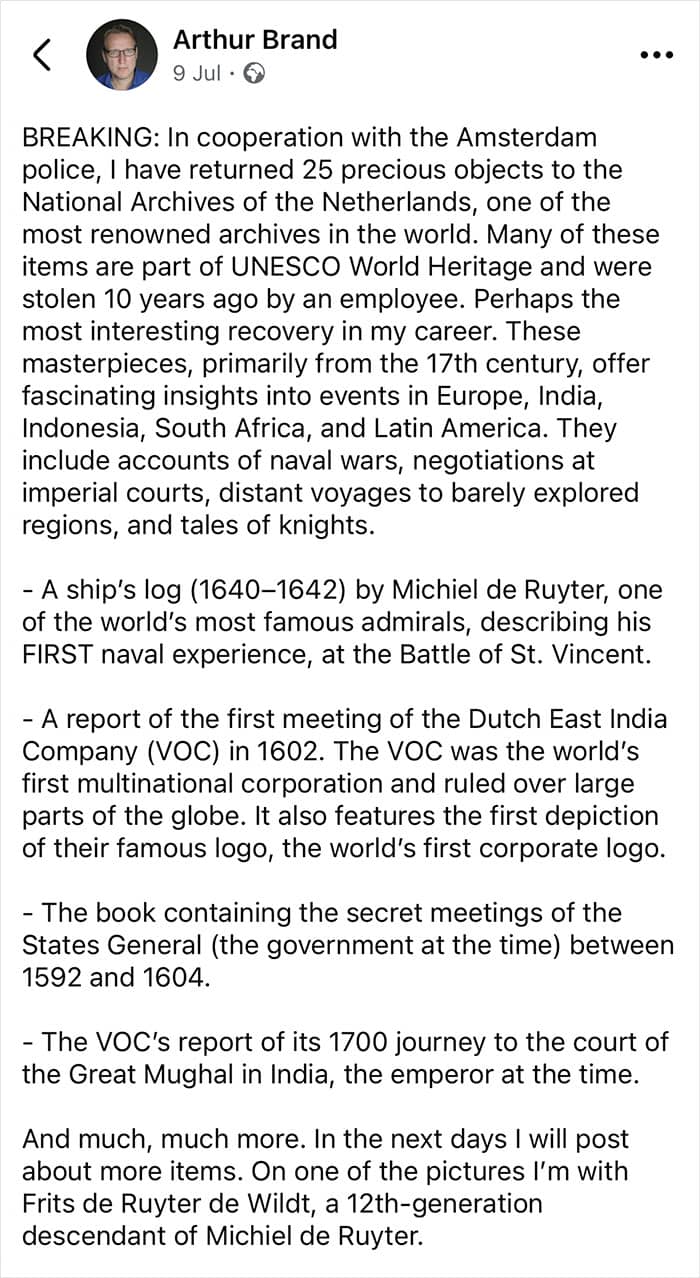
When he saw pictures of the find, the art detective knew immediately he was looking at a treasure trove and met up in person for a closer inspection
By chance, Brand got an email from a stranger who’d found an odd box of documents while straightening out a relative’s attic, he said in an interview with Art Newspaper’s Sarvy Geranpayeh. “They sent me some pictures, and I saw immediately that this was a treasure,” added Brand. Once he’d seen the contents of the box in person, he simply had to find out where they belonged and got in touch with the National Archives.
Apparently, officials at the archives had some idea the invaluable pieces of history were missing, but thought they’d been misplaced. “We manage more than [90 miles] of archives, over 15 million photographs and 300,000 maps and drawings,” a spokesperson for the National Archives told NL Times. “With such numbers, it is impossible to have a complete inventory of all the documents.”
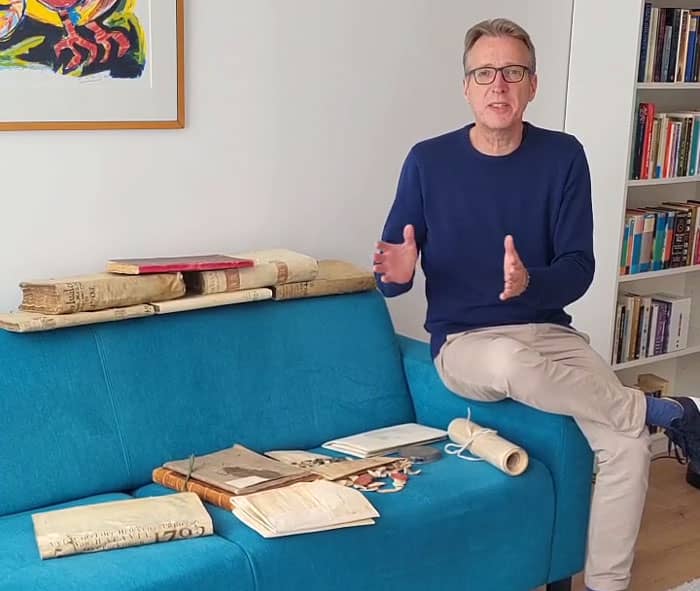
The haul “offers fascinating insights into events in Europe, India, Indonesia, South Africa and Latin America,” Brand said in a Facebook statement. “They include accounts of naval wars, negotiations at imperial courts, distant voyages to barely explored regions and tales of knights.”
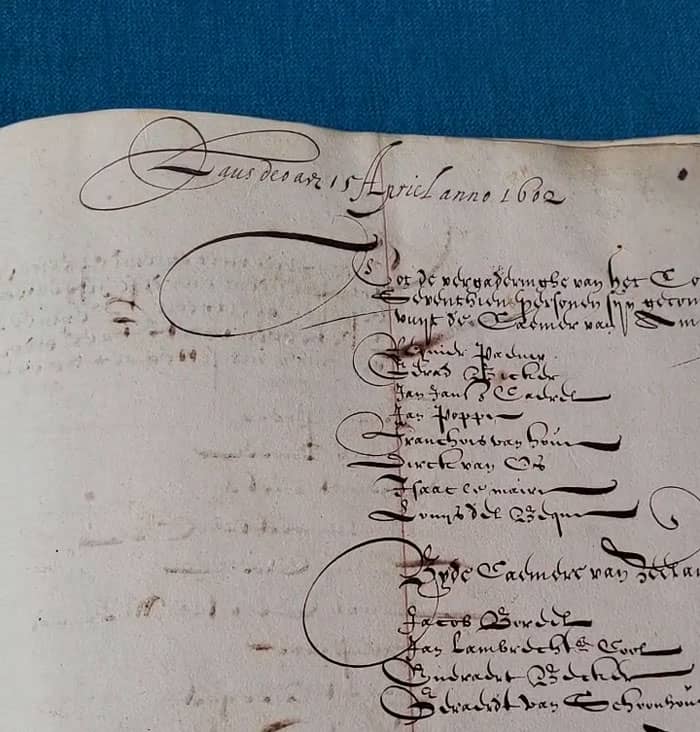
He got in touch with the Dutch National Archive, who knew the documents were missing but assumed they’d just been misplaced
One of the most noteworthy documents recovered is a record of the inaugural meeting of the Dutch East India Company, featuring its eminent “VOC” logo. Founded in 1602, the company became an unstoppable force in the international spice and textile trade and played a pivotal role in the Netherlands’ growth into a colonial empire. According to UNESCO, the archives of the company constitute “the most complete and extensive source on early modern world history anywhere.”
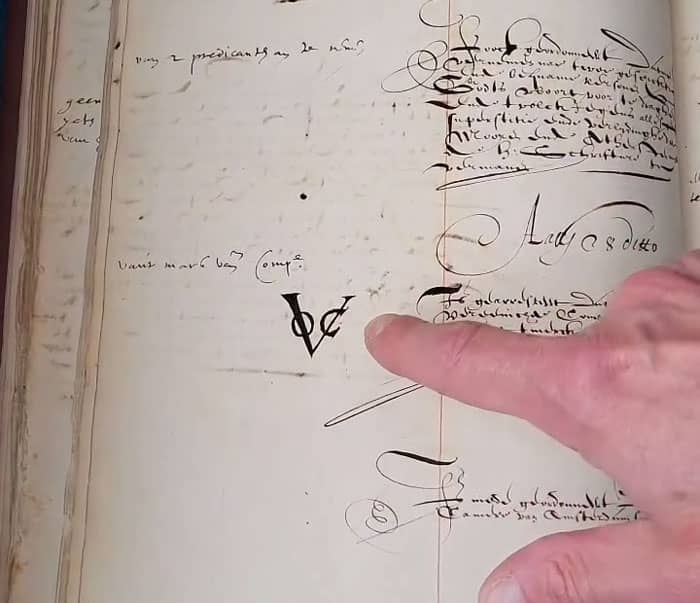
“In my career, I have been able to return fantastic stolen art, from Picassos to a van Gogh,” Brand told Agence France-Presse. “Yet this find is one of the highlights of my career.”
Amsterdam police think a previous employee of the archives stole the documents back in 2015, Brand told Art Newspaper. This person then borrowed money from a friend and used the historic documents as collateral. The documents were stashed in an attic, but the debtor died before retrieving them. “So there the investigation stops,” Brand concluded.
The art detective, who’s recovered stolen Picassos and a van Gogh in the past, said this discovery is one of the highlights of his career
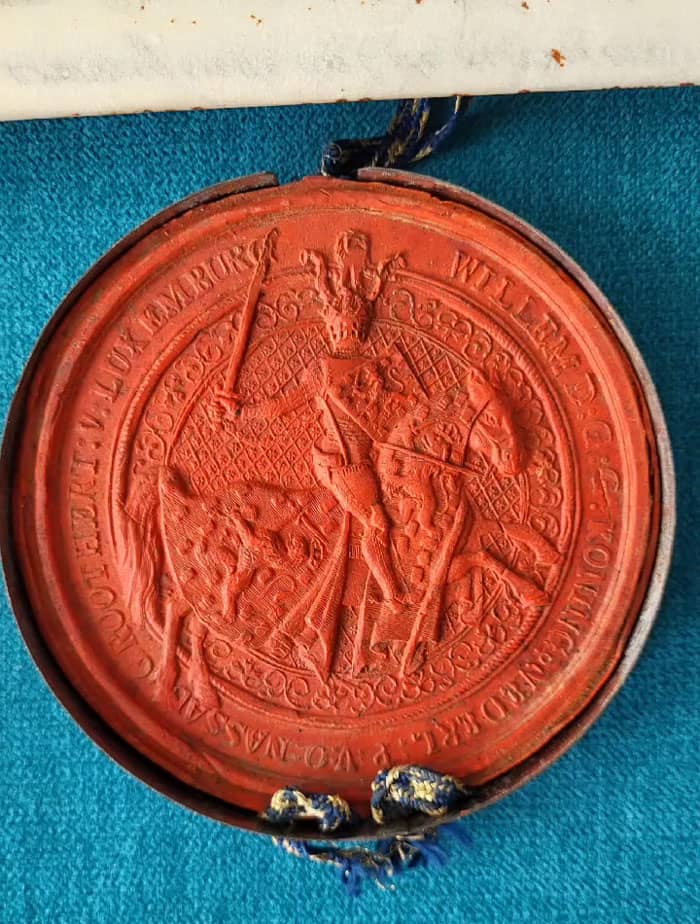
Wecaught up with Arthur Brand to find out just how he became an art detective. He had this to say, “My love for art and history began at a young age. My parents always took me to museums. When I was an exchange student in Spain, I was allowed to tag along with some treasure hunters one night. We found some Roman coins. That was an unforgettable moment.”
“When I later started collecting art myself, I quickly discovered that the market is rife with forgeries, and I became interested in them. A former art smuggler, turned police informant, became my mentor for a while. He introduced me to all his police and criminal contacts. And I have no regrets: The world where art and crime intersect is a very interesting one…” concludes Brand.